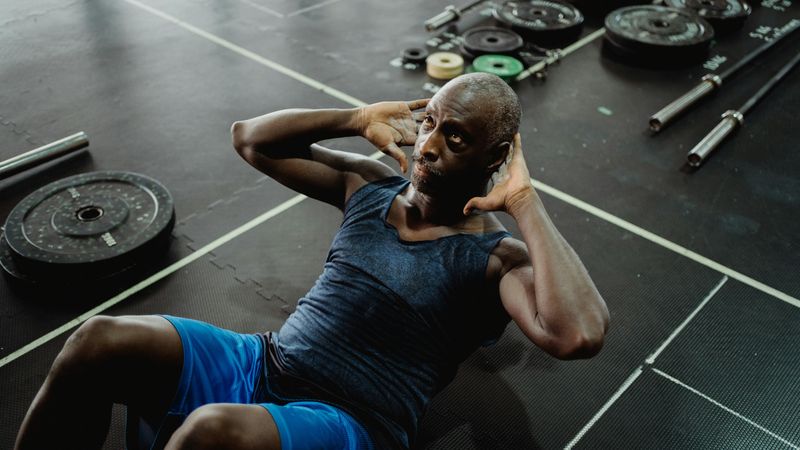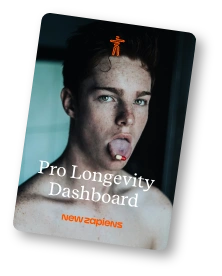The 3 Hard Truths About Longevity Nobody Wants to Admit

Last week, a VC asked me to settle a marital dispute. His wife ate an apple every afternoon. He wanted her to switch to $8 macro-balanced longevity bars because "fruit is just sugar." His entire diet was balanced, although 90% was processed.
This is modern longevity: optimizing the microscopic while ignoring the obvious.
As a Stanford-trained physician founder practicing longevity medicine and advising health companies, I see both sides of this industry—the exam room reality and the marketing machine. The gap between what we know and what we're sold has never been wider.
Here are three hard truths about longevity, plus a practical guide to navigate the noise.
Truth #1: We Can't Extend Maximum Human Lifespan (Yet)
Modern medicine has added decades to average life expectancy through vaccines, antibiotics, and cardiac care. But what the industry doesn’t advertise? There is no solid evidence that any drug, diet, or supplement can extend maximum human lifespan.
The oldest verified person, Jeanne Calment, died at 122 in 1997. Nobody has broken that record since.
Why we're stuck:
Lifespan trials are impossible. You'd need to follow thousands of people for 80+ years. No researcher, funder, or participant can commit to that. None of us want to wait for that.
No accepted shortcuts. The FDA maintains a list of surrogate endpoints—biomarkers that predict clinical benefit. "Biological age" clocks aren't on it.
What we do have:
Animal wins. The NIH's Interventions Testing Program has extended mouse lifespan with rapamycin (up to 26%), acarbose (22% in males), and 17-α-estradiol (19% in males). Promising, but mice aren't humans. Not to mention, only about 10% of interventions that work in mice translate to successful human treatments, and the rate may be even lower for complex processes like aging.
Healthspan signals.
- Low-dose mTOR inhibitors improved vaccine response in older adults
- The CALERIE trial showed 12% calorie restriction modestly slowed one aging measure (DunedinPACE) but didn't change other clocks
Bottom line: We can improve how you feel at 80. We can't yet guarantee you'll reach 100.
Truth #2: Marketing Runs Ahead of Medicine
Walk through any health store or scroll any wellness feed: "anti-aging" products are everywhere. How is this legal if aging isn't treatable?
The regulatory loophole:
Aging = natural, not disease. The FDA doesn't recognize aging as an indication, so companies pivot to supplements, wellness services, and lab tests—all with lighter oversight.
Clocks ≠ clinical outcomes. Those biological age tests? They can stratify population risk but aren't validated to predict individual lifespan. The FDA's 2024 rule will bring many under medical device oversight, but enforcement is just beginning.
The supplement gray zone. Take NAD+ boosters: heavy marketing, ongoing litigation, evolving regulatory status. Science in progress, sold as settled.
New guardrails emerging:
- The FTC now requires human evidence for health claims
- A 2024 rule bans fake reviews with civil penalties up to $51,744 per violation
Translation: Much of what you see is experimental science wrapped in confident marketing. Treat bold claims as hypotheses, not proven outcomes.
Truth #3: Most "Evidence" Isn't
The longevity evidence base resembles a noisy restaurant—everyone's shouting, but it's hard to hear what matters.
The replication crisis hits longevity:
Small studies, big claims. When 23 teams tried replicating high-profile cancer biology findings, effect sizes shrank by 85%.
Paper mills pollute journals. Publishers retracted 8,000+ papers from Hindawi/Wiley alone in 2023. Retraction Watch now tracks over 50,000 retractions.
Preprints ≠ peer review. That exciting mouse study on Twitter? It might change completely before publication—or never get published at all.
Red flags to watch for:
- Studies with <50 participants claiming breakthrough results
- Multiple endpoints tested, but only positive ones reported
- No pre-registration (moving goalposts mid-game)
- Missing adverse event data
- Industry funding without independent replication
What to trust: Large, pre-registered, multi-site trials with transparent data and CONSORT-compliant reporting.
What Actually Works (The Boring Reality)
While we wait for breakthroughs, these interventions have the strongest mortality benefit evidence:
Exercise supremacy. Moving from the bottom to top quintile of VO₂max is associated with a 5-fold reduction in mortality risk—stronger than the difference between smoking and not smoking.
Blood pressure control. Each 10 mmHg reduction in systolic BP reduces major cardiovascular events by 20% and all-cause mortality by 13%.
Mediterranean diet pattern. Associated with 20-30% reduction in cardiovascular disease and 13% reduction in cancer incidence. Yes, this includes apples.
Social connection. Loneliness increases premature death risk by 26-32%—comparable to smoking 15 cigarettes daily.
Sleep optimization. Both <6 and >9 hours associated with increased mortality. Sweet spot: 7-8 hours.
Your Longevity BS Detector
When evaluating any longevity claim, ask:
☐ Is this a peer-reviewed study (not a preprint, press release, or blog)?
☐ Does it measure actual health outcomes (disease, function, mortality—not just biomarkers)?
☐ Were there >100 participants followed for >6 months?
☐ Is it pre-registered at ClinicalTrials.gov or similar?
☐ Has another team replicated it?
☐ Is funding disclosed and are raw data available?
☐ Does it report adverse events prominently?
If you can't check at least 4 boxes, remain skeptical.
The Practical Protocol: What to Do Today
Forget overwhelming optimization lists. Here’s one doable framework - the Quarterly Focus Method:
Every 3 months, pick:
ONE thing to lower:
- Blood pressure below 120/80
- LDL cholesterol below 100 mg/dL
- Fasting glucose below 100 mg/dL
- Resting heart rate below 60 bpm
ONE thing to raise:
- VO₂max by 1 MET (3.5 mL/kg/min)
- Grip strength by 5%
- Weekly Zone 2 cardio minutes by 30
- Strength training sessions from 2→3 weekly
ONE habit to lock:
- 7+ hours sleep nightly
- 8,000+ steps daily
- Mediterranean diet adherence score by 2 points
- One new social activity weekly
Track these three. Relax about everything else for 90 days.
Reasons for Optimism
This article focuses on hard truths, but the future isn't bleak. Here are a few developments I’m following closely:
- TAME trial is testing whether metformin delays multiple age-related diseases simultaneously—the first FDA-negotiated aging trial.
- VIBRANT study is looking at rapamycin for delaying menopause (essentially being used as a surrogate marker of aging).
- Dog Aging Project is running the largest companion animal longevity trial ever, with results translatable to humans.
Progress is happening. It's just slower and messier than marketing suggests.
The Bottom Line
The longevity field sits at an awkward adolescent stage: past childhood fantasies, not yet mature science. We have powerful tools to improve healthspan today—exercise, nutrition, sleep, connection, medical basics—but no proven way to extend maximum lifespan.
Smart engagement means:
- Banking the basics (they work)
- Experimenting carefully (with reversibility in mind)
- Demanding evidence (real outcomes, not just biomarkers)
- Supporting rigor (pre-registered trials, data sharing, replication)
The future of longevity is bright. But today, the most radical thing you can do is probably a boring thing: take a walk, call a friend, get your blood pressure checked.
And yes, it’s fine to eat the apple. Your 90-year-old self will thank you.
References
Author: Hillary Lin
Hillary Lin, MD is a Stanford-trained longevity physician and the Co‑Founder & CEO of Care Core, a clinical platform that democratizes doctor‑supervised lab tests, prescriptions, and evidence‑based health products. Through YouTube, LinkedIn, Instagram, TikTok (@hillarylinmd), her newsletter The Longevity Letter, and the podcast The Longevity Show, she shares practical longevity science to help people extend their healthspan.




